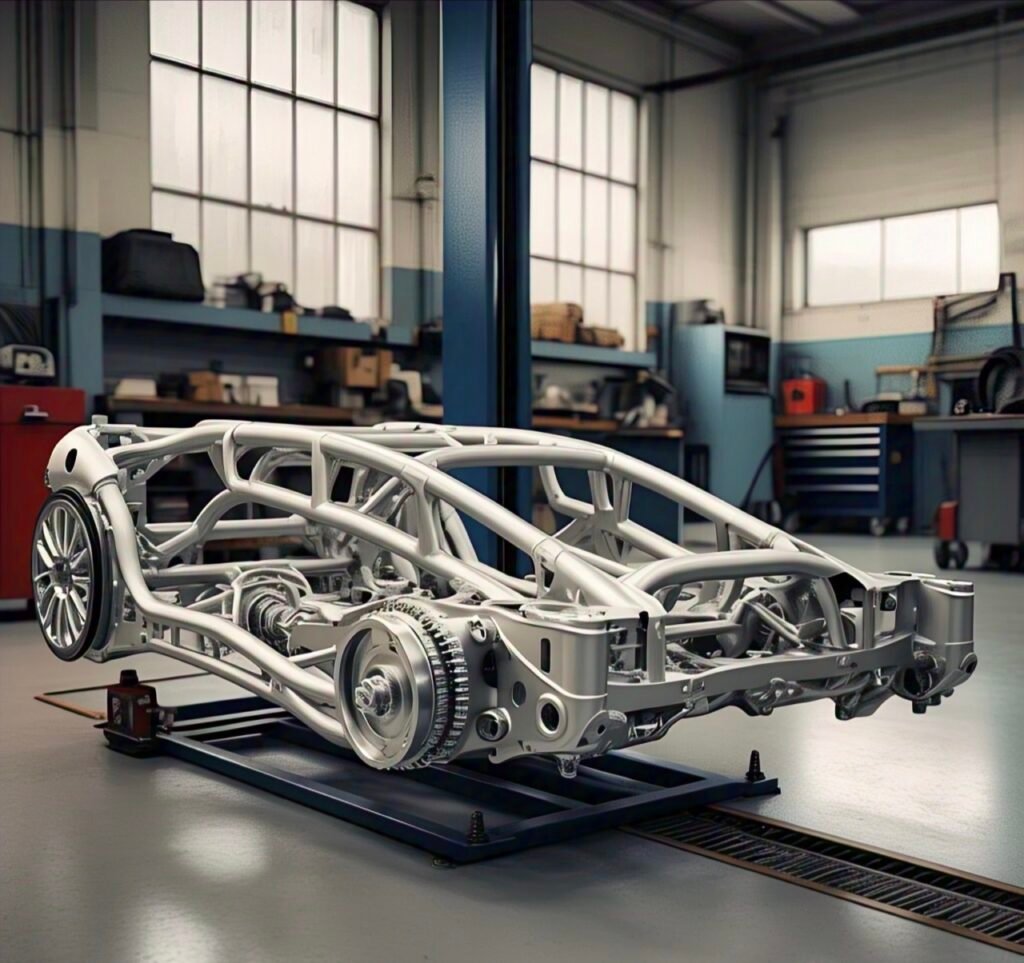An automotive chassis is the structural framework of a vehicle that supports its components and systems, providing rigidity, strength, and a platform for mounting parts like the engine, transmission, suspension, and body. It serves as the skeleton of the vehicle, ensuring stability and safety during movement.
The Most Important Parts of an Automobile Chassis 1. The main supporting structure, also known as the frame, can be: Ladder Frame: Common in trucks and SUVs for durability and load-carrying.
Monocoque (Unibody): Integrates the body and frame into a single unit, common in modern cars for reduced weight and improved safety.
2. The suspension system connects the wheels to the frame, resulting in comfortable ride and handling. 3. Steering System: Allows the driver to control the direction of the vehicle.
4. Braking System: Essential for slowing and stopping the vehicle safely.
5. Powertrain Mounts: Supports the engine and transmission.
6. Wheels and axles transfer power to the road from the engine. The Kinds of Chassis 1. Ladder Frame: Traditional and robust, ideal for heavy-duty vehicles.
2. Monocoque (Unibody): Lightweight and efficient, used in most modern passenger cars.
3. Backbone Chassis: A central structure resembling a tube that is utilized in some sports cars. 4. Space Frame: A network of tubular sections, common in high-performance vehicles and race cars.
The safety, efficiency, and performance of a vehicle are all affected by the chassis design. Its materials range from steel and aluminum to advanced composites in high-end or electric vehicles.
By Asam Gnaneswar




